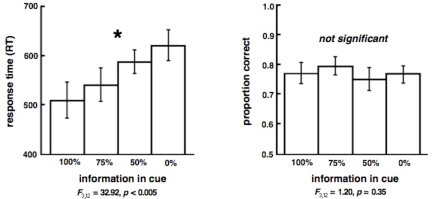Description:
Attention is a fundamental component process of virtually all aspects of human cognition. The ability to manage the barrage of sensory inputs that we encounter in the world is what allows us to engage in complex, goal-directed behavior. Deficits in attentional control are a core aspect of almost all neurological disorders and are increasingly prevalent in patients suffering from traumatic brain injury.
Because of this vulnerability to disease or trauma, a detailed understanding of the neural mechanisms for how the brain allocates attention is a critical component of our research.
The development of neuroscientifically targeted interventions to remediate cognitive deficits in populations with neurological or psychiatric disease, as well enhance these abilities in healthy individuals, is a critical missing link between basic science and clinical translation.
Deliverables:
By the end of the project period we will have a fully developed suite of mobile cognitive training games designed to assess and enhance the limits of human attentional allocation and perception.
This enhancement will be based on our previous cognitive training research in the laboratory, but we will extend these results outside the lab by training attentional allocation and perception suing mobile and console gaming platforms including:
- Apple iPhone
- Apple iPad
- Microsoft Xbox Kinect
Methods:
Drs. Gazzaley and Voytek will work with expert software developers to translate our in-lab cognitive research tasks into mobile and console gaming platforms. Our ongoing research has shown that we can manipulate attentional allocation by manipulating the amount of information we provide subjects about where to allocate their attention.
Our goal with this project is to provide a fun, engaging at-home version of our laboratory task to train subjects on how to more successfully and more broadly allocation their attention.
Laboratory Results:

Preliminary Kinect Results:

Our preliminary Kinect results show that we can capture the same general behavioral effect—that changing the amount of certainty given to the subjects on where to allocate their attention—leads to increases response times.
This is encouraging that we can reproduce in-lab effects using a popular gaming platform.
Impact on UCSF’s Mission:
UCSF sits at the forefront of scientific and technological innovation. By taking in-lab findings out into the popular application distribution platforms such as Xbox Live and the Apple App Store, which reach millions of users globally, including many underserved populations, we can help keep UCSF as a world leader in translating science into health applications.
Team Members and Roles:
Bradley Voytek, PhD (75% effort): Post-doctoral fellow, UCSF Department of Neurology. Project and neuroscientific lead
Adam Gazzaley, MD/PhD (10% effort): Professor, UCSF Department of Neurology. Faculty advisor and mentor
Jacob Balthazor (100% effort): iPad/iPhone developer, Digital Media Academy
Jeffrey Chamberlain (100% effort): Kinect developer, USC Interactive Media Division
Commenting is closed.

Comments
Sounds very interesting! Will
Agree that the ability to use
Capturing performance data